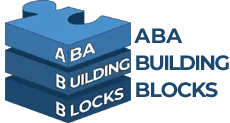Ever grappled with optimizing your practice’s financial cycles? Then, you’ve probably encountered the term ‘healthcare RCM’ or Revenue Cycle Management. It’s an essential backbone of any healthcare organization, ensuring financial health while enabling us, at ABA Building Blocks, to continue providing the best-quality care to our patients.
In the continually evolving landscape of healthcare, where patient responsibility is increasingly significant, efficient healthcare RCM serves as a lifeline for organizations like ours. It’s a rather complex process that starts even before a patient steps into our clinic and ends when we’ve ticked off every service billed against the final payment.
Herein lies the rub: the complexity of healthcare RCM, coupled with industry-specific challenges such as changing reimbursement models and cumbersome billing processes, could lead to unnecessary denials and debts, impacting patient satisfaction and our organization’s reputation.
To address these issues, many healthcare providers are exploring different solutions. This trend has given rise to two primary types of RCM arrangements: software and outsourcing. Each method with its potential benefits and drawbacks ties back to organizational needs and goals.
Given this backdrop, in this guide, we offer a primer on healthcare RCM, breaking it down into understandable chunks. We delve deep into its importance, processes, challenges, technology, and future trends to equip you with a solid understanding of this crucial aspect of healthcare administration.
Here’s a quick snapshot of what you can expect:
- The basics of healthcare RCM, its significance, and the repercussions of mismanagement
- A walk-through of the RCM process, from patient entry to final payment
- An overview of existing RCM challenges coupled with the shift towards patient responsibility
- A look at how technology is shaping RCM
- A review of top RCM vendors, their unique features, and factors to consider when choosing one
- A glimpse into the future of healthcare RCM and its role in transitioning to value-based reimbursement

Understanding the Importance of RCM in Healthcare
In the complex world of healthcare, maintaining financial viability is crucial for the delivery of quality care. This is where Revenue Cycle Management (RCM) plays a pivotal role.
The Role of RCM in Ensuring Financial Viability
As our expert Kim Finger, Ph.D. at ABA Building Blocks explains, RCM is a financially-driven process that allows healthcare providers to receive reimbursement for the care they provide in a timely and efficient manner. It’s a process that involves identifying, collecting, and managing revenue from payers based on the services provided.
In simpler terms, RCM is the lifeblood of a healthcare practice’s financial health. It ensures that providers are adequately compensated for the services they provide, and that this happens promptly. Without an efficient RCM process, healthcare providers may face delayed or reduced payments, leading to financial instability.
How Mismanagement of RCM Can Impact Healthcare Organizations
On the other hand, mismanagement of RCM can have serious repercussions. For instance, errors in the billing process, such as incorrect coding or inaccurate patient information, can lead to denied claims. This not only affects the practice’s revenue but also increases the administrative burden as the claims need to be corrected and resubmitted.
There’s also the risk of non-compliance with regulations. Healthcare practices are required to adhere to a complex web of regulations and laws, and failing to do so can result in penalties. For example, under the No Surprises Act, providers are required to promptly update their provider directory information and inform plans about any changes in their network status. Non-compliance can have serious consequences, including the removal of providers from the directory.
At ABA Building Blocks, we understand the critical role RCM plays in healthcare practices. We provide full RCM services and support, helping practices navigate this complex process and ensuring their financial health. We also offer expert consultation and comprehensive audits to ensure accuracy and compliance, providing a thorough understanding of the process and requirements.
Effective RCM is not just about securing timely reimbursement – it’s about ensuring the financial viability of healthcare practices, and in turn, their ability to provide quality care to patients.
In the next section, we will delve deeper into the process of Revenue Cycle Management, examining its three phases: Order to Intake, Care to Claim, and Claim to Payment.
The Process of Revenue Cycle Management
Now that we’ve established the importance of healthcare RCM, let’s dive into the process itself. The revenue cycle can be broken down into three main phases: Order to Intake, Care to Claim, and Claim to Payment.
The Three Phases of RCM: Order to Intake, Care to Claim, and Claim to Payment
The first phase, Order to Intake, involves patient scheduling and registration. The process begins with the patient’s initial inquiry about healthcare services and continues through to the point where the patient is registered and their insurance is verified. This phase ensures that the healthcare provider has all the necessary information to effectively manage the patient’s care.
Next, we have the Care to Claim phase. This stage encompasses the actual provision of healthcare services to the patient, from diagnosis to treatment. Once the healthcare services have been provided, the care details are translated into medical codes, which are then used to generate a claim. This claim represents the amount the healthcare provider is owed for the services rendered.
Finally, the Claim to Payment phase involves submitting the generated claim to the patient’s insurance company for payment. The insurance company reviews the claim, and if approved, the payment is sent to the healthcare provider. This phase concludes with payment reconciliation, where the payment received is matched against the claim submitted.
The Role of RCM in Patient Interaction from Initial Inquiry to Final Payment
Effective RCM in healthcare is about more than just getting paid. It plays a vital role in managing the entire patient interaction, from the moment they first contact the healthcare provider to the final payment for services provided.
During this process, the healthcare provider must ensure that all patient information is accurately collected and documented. Patients should only be billed for the services they received, and insurance claims should be submitted in a timely manner to prevent delays in payment.
At ABA Building Blocks, we understand the complexities of healthcare RCM. We’re committed to helping healthcare providers streamline their RCM processes, ensuring that patient interactions are efficiently managed from start to finish.
Efficient and effective RCM is not just about improving the bottom line. It’s also about enhancing patient satisfaction and building a strong reputation for your healthcare organization. And that, in the end, is what healthcare is all about.
In the next section, we’ll explore some of the challenges healthcare providers face in managing their revenue cycles.

Challenges in Healthcare Revenue Cycle Management
Running a successful healthcare practice is not just about providing excellent patient care, it also involves navigating the complex landscape of Revenue Cycle Management (RCM). Healthcare RCM can often be fraught with challenges, primarily due to the dynamic nature of the healthcare industry and its financial environment. Below, we delve into some of the major hurdles that healthcare providers often encounter when managing their revenue cycles.
The Shift Towards Direct Patient Responsibility and High Deductible Health Plans
Over the last decade, there has been a significant shift from commercial payer reimbursement to direct patient responsibility. This shift has been largely driven by the rise in high deductible health plans. The result is that patients are now financially responsible for a larger portion of their healthcare costs, thus increasing the burden on healthcare providers to collect payments directly from patients.
This trend necessitates healthcare organizations to revisit their RCM strategies, find ways to improve patient communication, and implement effective patient payment collection methods. Failing to adapt to this trend can lead to significant revenue leakage and impact the financial health of the organization.
Struggling Financial Conditions and Changes in Legislation and Regulatory Compliance
Another major challenge is the constantly evolving landscape of healthcare legislation and regulatory compliance. These changes can directly impact reimbursement rates, as highlighted by the recent rate reductions by MCOs following the Ohio Department of Medicaid rates.
Healthcare providers need to stay informed about these changes and understand their terms and conditions to avoid unexpected reductions in reimbursement rates. Ignorance of these policies can lead to substantial losses and even legal complications.
Further compounding these challenges is the implementation of new rules such as the No Surprises Act. This policy protects patients from surprise billing by limiting out-of-network charges, thereby potentially affecting the revenue of healthcare providers. Achieving compliance with such policies may require adjustments to revenue cycle workflows, adding to the complexity of RCM.
At ABA Building Blocks, we understand that these challenges can be overwhelming for small to medium-sized healthcare practices. That’s why we offer full RCM services to help you navigate these complexities and ensure the financial health of your organization. With our assistance, you can focus on what matters most – providing quality care to your patients.
In the next section, we’ll discuss how technology can be leveraged to streamline RCM processes and overcome these challenges.
The Role of Technology in Revenue Cycle Management
As we navigate the intricacies of healthcare RCM, technology plays an increasingly vital role. It not only simplifies the process but also increases efficiency, accuracy, and overall financial success. From storing and managing billing records to leveraging data analytics and artificial intelligence (AI), technology is revolutionizing RCM.
How RCM Systems Store and Manage Billing Records
Health IT and EHR systems are invaluable tools for RCM. They help us streamline and refine our approach to managing revenue cycles. For instance, we use these technologies to track claims throughout their lifecycle, collect payments, and address claim denials. This ensures a steady stream of revenue and allows us to provide uninterrupted care to our patients.
During the COVID-19 pandemic, 75 percent of hospitals and health systems across the country adopted RCM technology. At ABA Building Blocks, we are part of this tech-savvy majority, leveraging technology to maintain robust revenue cycle management processes even in challenging times.
The Use of Data Analytics Software and Technologies in RCM
Data analytics software is a critical part of our RCM toolkit. It provides actionable insights, helping us optimize our revenue cycle and enhance our financial health. For example, we can visualize our revenue cycle to identify areas for improvement, sort billing data, and produce corresponding reports. This allows us to set and monitor revenue goals effectively.
Data analytics also empowers us to understand our patients better. We can track which chronic diseases are most prevalent among our patients and pinpoint any abnormalities in claims data. This helps us tailor our services to meet our patients’ unique needs.
The Potential of Artificial Intelligence in Streamlining RCM Processes
Artificial intelligence (AI) is another game-changer in healthcare RCM. AI can analyze vast amounts of data quickly and accurately, making it an excellent tool for tasks such as recommending appropriate ICD-10 codes, monitoring medical billing processes, and scheduling patient appointments.
At ABA Building Blocks, we’re leveraging AI to facilitate our RCM processes. AI helps us understand why a claim was denied, ensuring that we can rectify any issues promptly. This not only increases our efficiency but also ensures that we receive proper reimbursement for our services.
In addition, AI and automation can assist with prior authorization requirements, further streamlining our RCM processes. As we continue to adopt innovative technologies, we remain committed to providing the highest quality of care while ensuring the financial health of our organization.
As we look towards the future, it’s clear that technology will continue to play a pivotal role in healthcare RCM. At ABA Building Blocks, we’re excited to embrace these technological advancements and continue providing top-tier services to our patients. In the next section, we’ll discuss some of the top RCM vendors and their unique features.
Top RCM Vendors and Their Unique Features
When it comes to Revenue Cycle Management in healthcare, there are several key players in the market that have established themselves as leaders due to their innovative technologies and customer-centric solutions. Some of these significant vendors include PwC, Athenahealth, CureMD, Azalea Health, AdvancedMD, Kareo, R1rcm, DrChrono, CareCloud, and MedicsRCM.
Each of these vendors has unique features that set them apart. For example, Athenahealth is known for its cloud-based practice management and EHR systems, providing efficient services to small to medium-sized physician practices and hospitals. On the other hand, CureMD excels in integrating their Revenue Cycle Management solution seamlessly with your practice’s existing workflows, offering data analytics, and providing secure time tracking.
Each healthcare provider has unique needs, and the best RCM vendor for you will be one that can cater to those specific requirements effectively.
Factors to Consider When Evaluating RCM Companies
Choosing the right RCM company is a critical decision for every healthcare organization. Here are some factors to consider when evaluating potential RCM companies:
- Patient-Friendly Billing Process: Ensure the company offers a patient-friendly billing process and can provide patient support for billing inquiries. This not only enhances patient satisfaction but also promotes prompt payment (TechTarget).
- Cost: Understand the company’s pricing structure and evaluate whether their fees align with your budget and revenue expectations.
- Capability to Scale: The RCM company should be able to accommodate your practice’s growth and scale their services as your practice expands.
- Customer Support: Prompt assistance should be available if issues or questions arise.
- Performance Indicators: Define key performance indicators (KPIs) and establish benchmarks to monitor and measure their performance.
- Data Security: Inquire about their commitment to data security and regulatory compliance.
At ABA Building Blocks, we understand the importance of choosing the right RCM partner for your practice. We encourage you to consider these factors and choose a vendor that can truly meet your needs and help you streamline your revenue cycle management processes. After all, successful healthcare RCM is not just about processing payments; it’s about building a financially healthy practice that can continue to provide high-quality care to its patients.
The Future of Revenue Cycle Management in Healthcare
The landscape of healthcare is continually evolving, and healthcare RCM is no exception. With new technologies, shifting financial responsibilities, and regulatory changes, the practice of revenue cycle management is adapting to meet these challenges.
How RCM is Adapting to Changes in the Healthcare Industry
The future of healthcare RCM will be shaped by advancements in technology and IT systems. As seen during the COVID-19 pandemic, 75 percent of hospitals and health systems deployed revenue cycle management technology. These technologies, such as electronic health records (EHRs) and data analytics software, are becoming increasingly prevalent in RCM, enabling healthcare organizations to track claims throughout their life cycle, collect payments, and handle claim denials more effectively.
Artificial Intelligence (AI) is another technological innovation that holds promise for healthcare RCM. AI can help manage large volumes of data and pinpoint key indicators, such as reasons for claim denials. As one expert from R1 RCM noted, AI’s ability to evaluate variables and improve success rates in process steps makes it a uniquely effective tool in revenue cycle management.
The Role of RCM in Transitioning the Industry to Value-Based Reimbursement
Another significant shift we are seeing in healthcare is the move towards value-based care. This approach reimburses healthcare providers based on patient outcomes, rather than the traditional fee-for-service model. As we at ABA Building Blocks have observed, this model can drastically impact how autism services are provided. A successful transition to this model will require RCM processes that can measure and track patient outcomes effectively.
In a value-based care model, RCM will play a critical role in incentivizing positive patient outcomes, ensuring that interventions for skill-building and behavior reduction yield meaningful results. As such, healthcare providers that fail to demonstrate these outcomes may face penalties, emphasizing the need for efficient and effective RCM processes.
In conclusion, the future of healthcare RCM will be shaped by technological advancements and a shift towards value-based care. As healthcare providers, we must stay abreast of these changes to ensure that our revenue cycle management processes are robust, efficient, and capable of meeting the challenges of the future.
Conclusion: The Essential Role of RCM in Healthcare
In the complex world of healthcare, Revenue Cycle Management (RCM) plays an essential role. As we’ve discussed, RCM is a financially driven process that allows healthcare providers to receive timely and efficient reimbursement for care. Its importance cannot be overstated as it directly impacts the financial health of healthcare organizations, including our own at ABA Building Blocks.
The process of RCM is intricate, involving everything from patient intake to final payment. This highlights the need for efficient and streamlined systems to manage these tasks effectively. Technological advancements like automation, data analytics, cognitive computing, and robotic process automation have revolutionized RCM, making it more efficient and insightful.
However, the landscape of healthcare RCM isn’t without its challenges. The shift towards direct patient responsibility and high deductible health plans has put a strain on healthcare organizations. Additionally, changes in legislation like the Medicare Access and CHIP Reauthorization Act of 2015 (MACRA) are pushing the industry towards value-based care. These factors underscore the need for effective RCM systems and practices.
At ABA Building Blocks, we understand the importance of staying ahead of these changes. With the help of leading RCM vendors, we are equipped to navigate the changing landscape of healthcare RCM. We believe that by leveraging the capabilities of these systems, we can ensure the financial health of our organization and continue to provide quality care for our patients.
We anticipate a future in which RCM will continue to adapt and evolve. The industry’s transition to value-based reimbursement will undoubtedly have a significant impact on RCM processes. However, with the right tools and strategies in place, we are confident in our ability to meet these challenges head-on.
We hope this guide has provided you with a comprehensive understanding of healthcare RCM. We invite you to explore our resources at ABA Building Blocks for more insights and information on this critical aspect of healthcare management.








